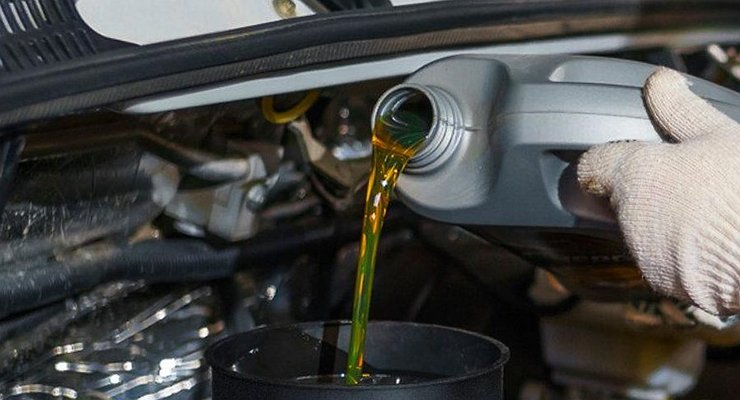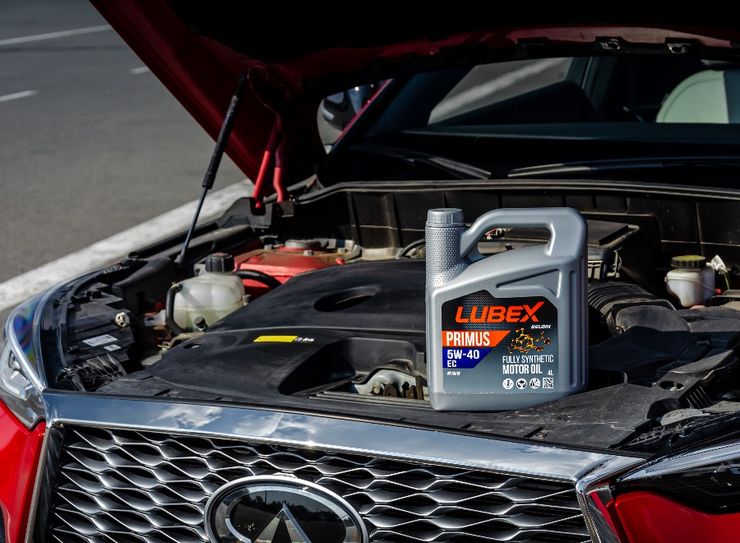Very often car owners ask themselves this question: what viscosity of motor oil is best for my car’s engine in cold winters, hot summers, in difficult road conditions or when participating in a trophy raid? We offer you the opportunity to choose your option and let’s think together about the right answer.
Let’s start with the fact that in each of these cases the car engine will work under special conditions. But if we are talking about normal operation (and not about motorsports and trophy raids), then the correct answer is already in the standard instructions for each car. The viscosity of the required oil for the engine is indicated by the manufacturer of the machine, based on the design features of the engine – gaps in friction pairs, the cross section of oil channels, the performance of the oil pump and other parameters. And, of course, the viscosity of engine oil is selected taking into account the desire to ensure minimum fuel consumption. For this reason, low viscosity oils are poured into the most modern engines, which, as you know, help to reduce internal losses in the engine.
In the owner’s manual of the car, in the “Maintenance” section, we will see several options for the viscosity of engine oils to apply, depending on the ambient temperature. Note that the viscosity of the oil is selected precisely according to the temperature and not according to engine load, dustiness in the air, fuel quality, the mass of the trailer to be pulled or the steepness of the mountain road to be overcome.
So rely on your car’s owner’s manual and then choose what’s on the market. Much has already been written about the difficulties of choosing car parts after the mass exit of foreign car manufacturers from the market. But the vacuum that has existed since the beginning of the summer is gradually being filled. The vacant seat, which is quite logical, is claimed by other players. So if you look closely, there is plenty to choose from.
Question one: what viscosity would be best for a cold winter? Look in the user manual. Most likely, it is for cold temperatures (-30C and below) that the car owner is recommended zero oil with a low temperature (winter) viscosity of 0W, which remains liquid even in severe frosts (-35C and below) and ensures under this conditions an easy engine start with minimal wear.
There is no secret: the lower the viscosity, the easier it is for the oil to penetrate the friction pairs. Do not forget that the viscosity range at high temperature (summer) for zeros, for example 30, should not be lower or, conversely, higher than specified in the factory manual! That is, if the instruction recommends oil with a viscosity of 0W-30, then it is impossible to pour even more “liquid” 0W-20. This is due to the thickness of the oil film, which forms on the internal combustion engine components at normal operating temperature (90-110C). We will not dwell on the technical parameters and talk about the dynamic viscosity of oils at 40C and 100C, but let’s say it’s simpler. With 0W-30 oil, the oil layer separating the parts will be thicker than with 0W-20. And if the design of the engine does not imply that “twenty” is poured into it, then more intensive wear of friction pairs with a decrease in working oil pressure is guaranteed. No amount of anti-wear additives can solve this!
For a temperate climate, it is possible to use, for example, universal oils. For example, for many modern Korean and Japanese vehicles, an oil with a viscosity (SAE) of 5W-30 is suitable for year-round use in all weather conditions.
True, here it is still necessary to pay attention to the level of operational characteristics, which for the engines of most Asians should not be lower than ILSAC GF−5. Such a universal lubricant can be, for example, the Turkish oil Opet Fulllife 5W-30, which has been introduced to our market since the spring of this year. It simply has the required quality class ILSAC GF−5.
If we look at turbocharged engines, and even with direct fuel injection, which are equipped with many modern European cars, then, in addition to the required quality class, the oil must have the abbreviation LSPI in the marking. She says the lubricant helps to minimize the risk of engine damage from the so-called low-speed pre-ignition that occurs in turbocharged and direct injection engines.
These properties are particularly present in the German motor oil BIZOL Green Oil + 5W-30. Well, if the engine runs on gas, then the oil must be developed taking into account the characteristics of this fuel. For example, another engine oil from Turkey, Lubex PRIMUS EC, grades 5W-30 and 5W-40, can be used in gas ICEs.
And what about the mostly summer use, and even with loads like a mountain hose or a heavy trailer? Maybe pour thicker oil, instead of SAE 30, splash fifty bucks in the engine? Special 10W-50 or even 10W-60 oils are also available for engines operating in particularly difficult conditions. RACING is often written on their cans. It would seem that a thick film on the parts should protect against wear, withstand any load. Yes, but the engine must also have suitable gaps in the friction pairs, taking into account such parameters of high temperature viscosity.
And if this “shoe polish” is poured into an engine designed for 0W-20 oil, the friction pairs will not be properly lubricated. And it will be completely possible to forget about efficiency – internal losses in the internal combustion engine will increase sharply.
So it turns out that the best oil viscosity is the one recommended to us by the manufacturer of the machine and its engine. So it’s probably not worth trying to seem smarter than the makers of the car.
Let’s start with the fact that in each of these cases the car engine will work under special conditions. But if we are talking about normal operation (and not about motorsports and trophy raids), then the correct answer is already in the standard instructions for each car. The viscosity of the required oil for the engine is indicated by the manufacturer of the machine, based on the design features of the engine – gaps in friction pairs, the cross section of oil channels, the performance of the oil pump and other parameters. And, of course, the viscosity of engine oil is selected taking into account the desire to ensure minimum fuel consumption. For this reason, low viscosity oils are poured into the most modern engines, which, as you know, help to reduce internal losses in the engine.
In the owner’s manual of the car, in the “Maintenance” section, we will see several options for the viscosity of engine oils to apply, depending on the ambient temperature. Note that the viscosity of the oil is selected precisely according to the temperature and not according to engine load, dustiness in the air, fuel quality, the mass of the trailer to be pulled or the steepness of the mountain road to be overcome.
So rely on your car’s owner’s manual and then choose what’s on the market. Much has already been written about the difficulties of choosing car parts after the mass exit of foreign car manufacturers from the market. But the vacuum that has existed since the beginning of the summer is gradually being filled. The vacant seat, which is quite logical, is claimed by other players. So if you look closely, there is plenty to choose from.
Question one: what viscosity would be best for a cold winter? Look in the user manual. Most likely, it is for cold temperatures (-30C and below) that the car owner is recommended zero oil with a low temperature (winter) viscosity of 0W, which remains liquid even in severe frosts (-35C and below) and ensures under this conditions an easy engine start with minimal wear.
There is no secret: the lower the viscosity, the easier it is for the oil to penetrate the friction pairs. Remember that the high temperature (summer) viscosity range for zeros, for example 30, should not be lower or, conversely, higher than specified in the factory manual! That is, if the instruction recommends oil with a viscosity of 0W-30, then it is impossible to pour even more “liquid” 0W-20. This is due to the thickness of the oil film, which forms on the internal combustion engine components at normal operating temperature (90-110C). We will not dwell on the technical parameters and talk about the dynamic viscosity of oils at 40C and 100C, but let’s say it’s simpler. With 0W-30 oil, the oil layer separating the parts will be thicker than with 0W-20. And if the design of the engine does not imply that “twenty” is poured into it, then more intensive wear of friction pairs with a decrease in working oil pressure is guaranteed. No amount of anti-wear additives can solve this!
For a temperate climate, it is possible to use, for example, universal oils. For example, for many modern Korean and Japanese vehicles, an oil with a viscosity (SAE) of 5W-30 is suitable for year-round use in all weather conditions.
True, here it is still necessary to pay attention to the level of operational characteristics, which for the engines of most Asians should not be lower than ILSAC GF−5. Such a universal lubricant can be, for example, the Turkish oil Opet Fulllife 5W-30, which has been introduced to our market since the spring of this year. It simply has the required quality class ILSAC GF−5.
If we look at turbocharged engines, and even with direct fuel injection, which are equipped with many modern European cars, then, in addition to the required quality class, the oil must have the abbreviation LSPI in the marking. She says the lubricant helps to minimize the risk of engine damage from the so-called low-speed pre-ignition that occurs in turbocharged and direct injection engines.
These properties are particularly present in the German motor oil BIZOL Green Oil + 5W-30. Well, if the engine runs on gas, then the oil must be developed taking into account the characteristics of this fuel. For example, another engine oil from Turkey, Lubex PRIMUS EC, grades 5W-30 and 5W-40, can be used in gas ICEs.
And what about the mostly summer use, and even with loads like a mountain hose or a heavy trailer? Maybe pour thicker oil, instead of SAE 30, splash fifty bucks in the engine? Special 10W-50 or even 10W-60 oils are also available for engines operating in particularly difficult conditions. RACING is often written on their cans. It would seem that a thick film on the parts should protect against wear, withstand any load. Yes, but the engine must also have suitable gaps in the friction pairs, taking into account such parameters of high temperature viscosity.
And if this “shoe polish” is poured into an engine designed for 0W-20 oil, the friction pairs will not be properly lubricated. And it will be completely possible to forget about efficiency – internal losses in the internal combustion engine will increase sharply.
So it turns out that the best oil viscosity is the one recommended to us by the manufacturer of the machine and its engine. So it’s probably not worth trying to seem smarter than the makers of the car.
Source: Avto Vzglyad
Donald Salinas is an experienced automobile journalist and writer for Div Bracket. He brings his readers the latest news and developments from the world of automobiles, offering a unique and knowledgeable perspective on the latest trends and innovations in the automotive industry.


















